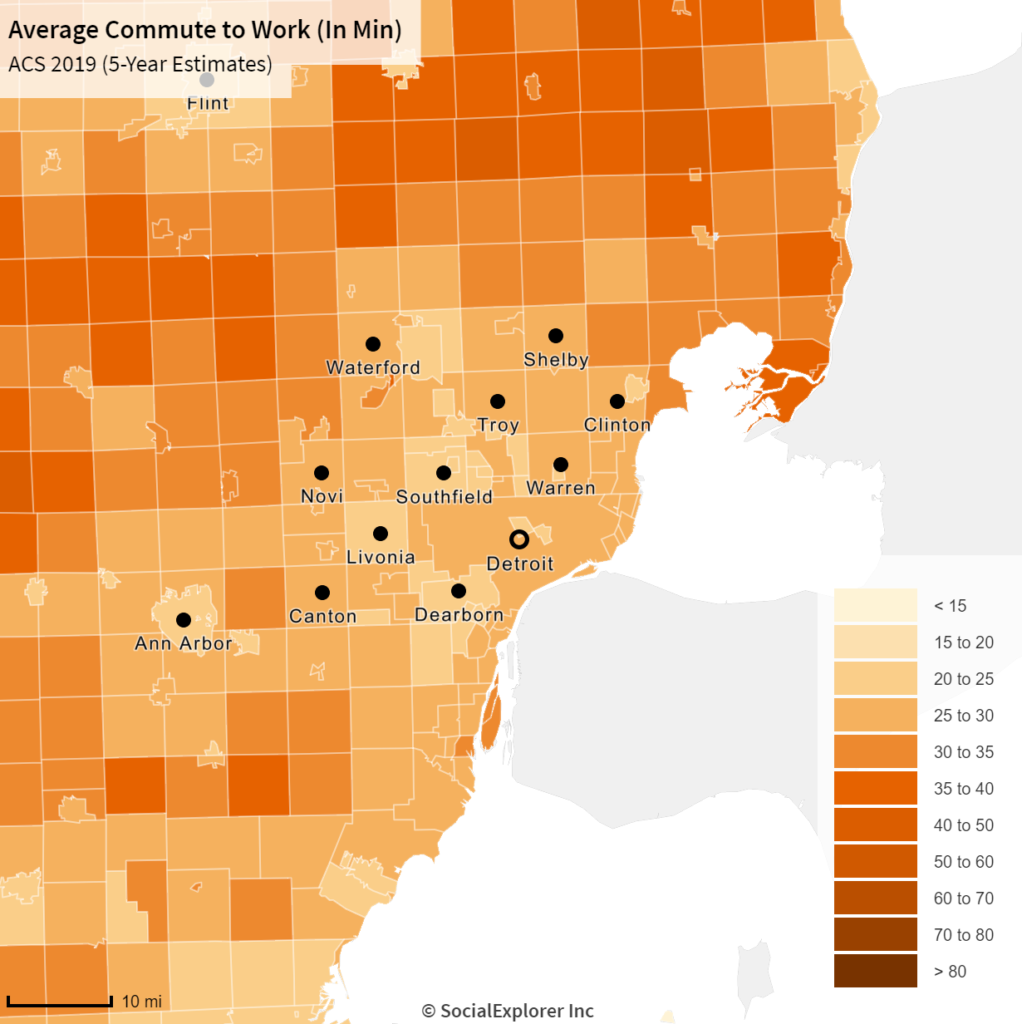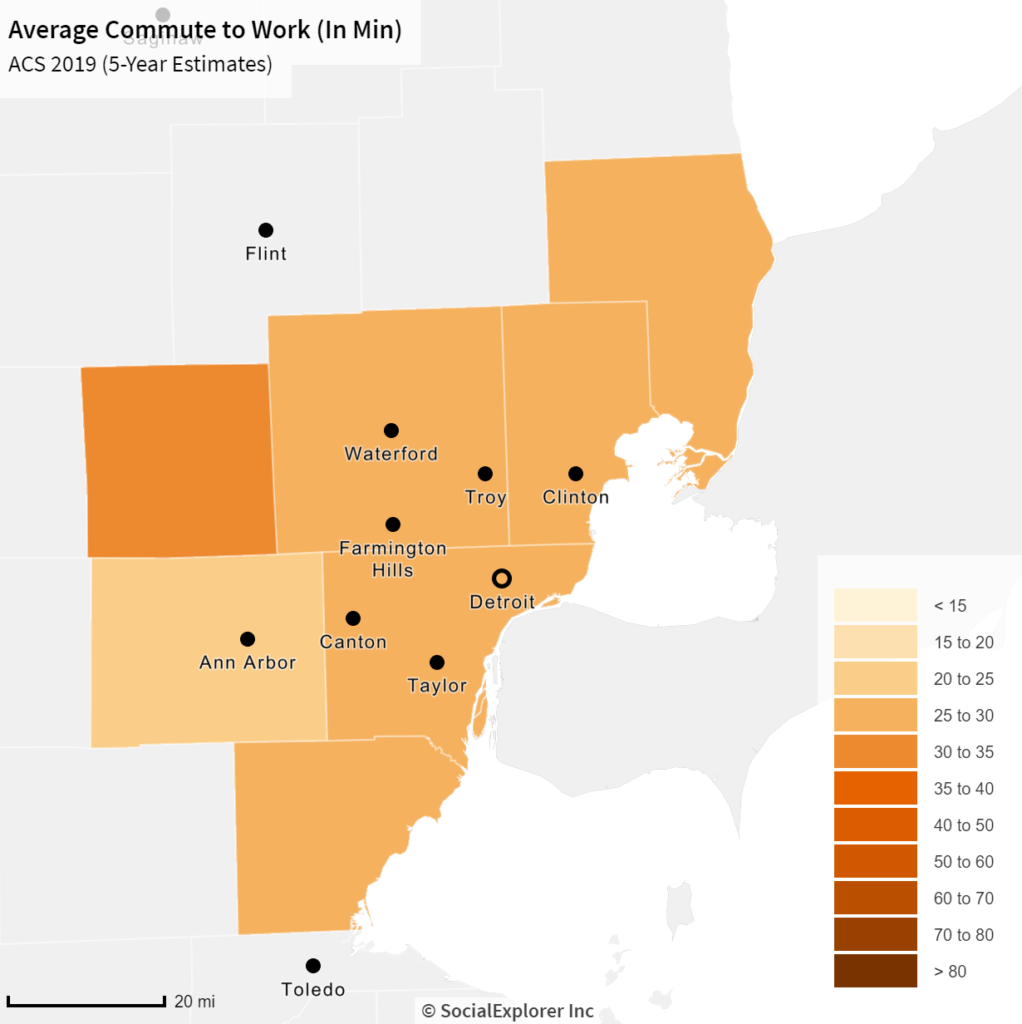In 2019, before COVID, the average American spent 28 minutes commuting to, or from, their job; in Michigan that average was 25 minutes. However, once the pandemic hit many of us began working from home, which directly impacted mobility to and from workplaces and commute times, presumably. According to a Feb. 23, 2021 report from Google, mobility to places of work in the State of Michigan have declined by 29 percent. At a regional level in Southeastern Michigan mobility has declined even more than the state average since last March. According to the data, mobility declined by the following percentages for the seven counties in Southeastern Michigan from the pre-pandemic baseline:
- Livingston County: 31 percent
- Macomb County: 33 percent
- Monroe County: 22 percent
- Oakland: 41 percent
- St Clair County: 15 percent
- Washtenaw County: 49 percent
- Wayne County: 35 percent
While mobility data differs from commute data, the fact that people are going to work less means commute times will also decline. Below are two maps showing the average work commute times in 2019 at the municipal and county levels.


In 2019, the City of Ann Arbor had the lowest average commute time at 20 minutes, according to the American Community Survey, and Clay Township had the highest average commute time at 37 minutes. At the county level, Washtenaw County (where Ann Arbor is located) had the lowest average commute time at 24 minutes and Livingston County had the highest average commute time at 33 minutes.
When the 2020 commute data is available it will be interesting to see just how many minutes the average commute time declined in Southeastern Michigan, and if that trend lasts for the long-term. Declined commute times and mobility to and from places of work means several things, including less automobile pollution and more time for individuals to participate in leisure activities, perform additional work, do chores or anything else that may be of interest to them.